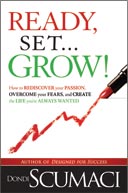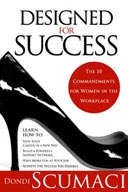Successful Virtual Team Communications
Module One
Powerful Virtual Team Communications
- Is it time to travel? Participants will build the “rules of the road” (literally). Dondi Scumaci will facilitate as team members coordinate guidelines.
- Build the virtual lexicon. What universal language works best on conference calls? Learn how to continually use clear, objective-based communications. Keep the call advancing and the objectives within site.
- Learn how to create a feed-back rich conversation in a distance format.
- Create opportunities for truth. Develop a check-in mechanism.
- Go for clarity. Learn to summarize agreements and clarify next steps.
- Build accountability in. Learn how to ask the right questions.
- Rules for planning the smart conference call. Breakthrough the typical conference call routine - create meeting formats and strategies that build engagement.
- Initiate discussions that build bridges, trust and solve problems.
- Diagnose common teaming barriers and develop a plan to breakthrough.
- Review the Team Balance Wheel. It is even more important to recognize your team performance when working virtually. This tool reveals team greatness. Shared Vision • Role Clarity • Goals/Measurements • Communication • Problem-Solving • Managing Conflict • Decision-Making • Empowerment • Resources
Module Two
Finding and Managing your High Performance Zone™
- Develop a personal pan of action to locate and leverage the four elements of high performance.
- Find your why.
- Manage your value.
Develop an understanding of the four elements of the High-Performance Zone (HPZ)™ – Perspective, Leadership, Capabilities and Resources. Discuss the levels of value and understand the choices we make daily. Participants will determine what they can do personally to create more value and personal satisfaction. A case study works though a fascinating scenario. participants will use the four elements to solve the problem, increase effectiveness and derive greater satisfaction.
Module Three
e-Writing
Learn tools and techniques that will help you add clarity and power to your e–mails as well as business documents. Discover how to get your thoughts organized fast and flowing freely – even if writing doesn’t come naturally. e–Writing is a skill that can be taught and you can learn how to capture the attention of readers by utilizing techniques taught within this module.
Knowing What You Want
- Ask four questions to decide whether e–mail is really your best option.
- Discover questions to ask to decide what reaction you want from your readers.
- Word your email so people take your seriously.
Breaking Through the Clutter
- Avoid common e–mail mistakes. Make sure your document is read.
- Use formatting techniques that increase readability.
- Getting What You Want – When You Want It
- Ensure that your e–mails are creating the professional image you want.
- Write effectively in a time crunch without sounding impersonal and rushed.
- Include language that gets immediate action.



